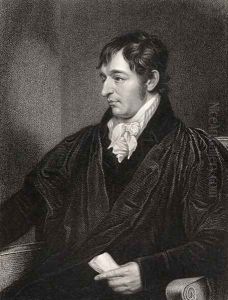Kirkby, Thomas Paintings
Thomas Kirkby was an English artist known primarily for his work as a topographical draughtsman and engraver. Born in 1720, Kirkby made significant contributions to the documentation of British landscapes and architecture during the 18th century, a period that saw a burgeoning interest in domestic travel and the picturesque. Although not as widely recognized as some of his contemporaries, Kirkby's work provides valuable insights into the historical and aesthetic contexts of the places he depicted.
Kirkby's approach to art was meticulous and detailed, reflecting the broader Enlightenment fascination with classification, order, and the natural world. His drawings and engravings often featured manor houses, castles, and churches, capturing not just the architecture but the mood and atmosphere of the English landscape. This was a time when the British gentry were increasingly interested in documenting and showcasing their estates and properties, and Kirkby's works served as both artistic endeavors and records of heritage and ownership.
Despite the precision and clarity of his work, much of Thomas Kirkby's life remains shrouded in mystery. Little is known about his personal life or artistic training, though his surviving works suggest a deep understanding of both the technical aspects of drawing and engraving and the theoretical underpinnings of landscape aesthetics. He was part of a network of artists and engravers who contributed to publications and projects that aimed to catalog the beauties of the British Isles, a testament to the collaborative nature of artistic production in this era.
Kirkby's career was relatively short-lived; he died in 1774, at the age of 54. Nevertheless, his contributions to the field of topographical art have endured. His works are held in various collections and archives, regarded as important documents of 18th-century British culture and landscape. Kirkby's legacy is that of an artist who, through his detailed and careful work, captured a fleeting moment in British history, preserving it for future generations to appreciate.
